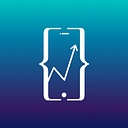7 keys to expert app wireframing
There’s no question: An expertly crafted wireframe makes the entire app development process go more smoothly.
Good wireframes can save time and money, but less experienced developers sometimes suggest skipping this step. Don’t buy it. Building a great native app begins with wireframing your design, which is the equivalent of brainstorming, planning, and sketching your native mobile app. Wireframing is an important initial aspect of mobile app design and can be crucial to the success of your project.
A wireframe is like a skeleton of your app, providing a framework in visual form through simple line sketching. You can approach wireframing in several ways: a sketch with pen and paper, a mockup with an online tool, creation using actual content, co-creating the wireframe with your team, and dozens more.
At Dropsource, we swear by our wireframing process. Below are 7 keys to expert app wireframing that we use here in-house.
1. Know your user flow
Wireframing is all about user experience (UX) and user interface (UI). Before you get started, you need to know about the purpose and goals that will draw users to use your mobile app. Once you’re familiar with your target audience, you can begin to flesh out your ideas and make some decisions: Where do you want the user to go? What do you want them to see? Where would you like them to tap? What is the app’s primary purpose? Wireframing takes the strategy behind user flow and puts it into a framework. Think of it as a journey. As a native app developer, you get to control the experience.
2. Sketch it out
When you begin translating your ideas into a wireframe, start by sketching it out on paper first. This allows you to brainstorm without having to make it perfect. You can flesh it out and take it into the digital space later.
The best resource to sketch on paper is a graph notebook journal. A solid preliminary step to wireframing your native mobile app is the pencil-to-paper approach called paper prototyping. There are digital prototyping solutions, but depending on your personal preference, nothing beats an old school approach when coming up with initial brainstorming ideas. With graph paper, you’re able to draw neater shapes and allow the lines to help you design around a grid framework. You can even use Post-it notes to easily shift your designs around until you find a solution that best fits your user flow.
3. Work with a grid
As in web design or mobile app design, working with a grid is key to creating good information hierarchy and maintaining proportion, scale, and balance. Grids help you create a layout, speeding up both the prototyping and development phase of your mobile app. Grids usually come in predefined 12-column, 16-column, or 24-column formats. Every great design has a grid behind it, and using graph paper will help you translate and transition into later stages.
4. Information hierarchy
Information hierarchy just means the order of importance you’ve assigned to your information and the way you’ve arranged its presentation to the end user. You can manipulate the hierarchy of your mobile app wireframe by using design elements with color, typography, graphics, contrast, position, etc. In the wireframing phase, typography should be the main, initial focus. Use typography and font sizes to differentiate between the levels of information and play around with the weight of fonts, whether bold, regular, semibold, or heavy. This is where a good design sense comes into play.
5. Look at inspiration
You don’t create in a bubble, so don’t act like it. Expert app wireframing involves looking around at what others have done. See what’s out there. How have others solved user flow and UX through wireframing? How can you create something comparable or better than what’s on the market right now? Here are some good ideas of sites to check out for inspiration.
6. Find the tools that work for you
There are a plethora of wireframing tools out there to help you create wireframes. Finding one that works for you is a matter of personal preference. From advanced Adobe applications like Illustrator and InDesign, which make it easier to export to Photoshop for final design, to simple, dedicated design software like Balsamiq, there’s something for everyone.
7. Create user case studies
To fully grasp the problem that your mobile app is attempting to solve, try creating user case studies to imagine how a user will interact with your app. Visualizing your target market and storyboarding a scenario is a great way to think outside the box and begin making informed decisions that will shape your mobile app design from its conception to completion.
Get together and sketch it out
Creating great wireframes doesn’t have to be difficult or time consuming. Get all the stakeholders together (even that’s just you and coffee) and go through the above steps. With these 7 keys in mind, you can begin to turn your mobile app into reality and take advantage of the resources that best suit your needs.
What practices does your team use to create wireframes?
Comment with your best wireframing suggestions below.
☞ Please tap or click “♥︎” to help to promote this piece to others.
Check out Dropsource for your next app development project. Our platform helps dev teams efficiently build & ship quality native apps by converting your team’s app designs into concise, extendable native source code.

